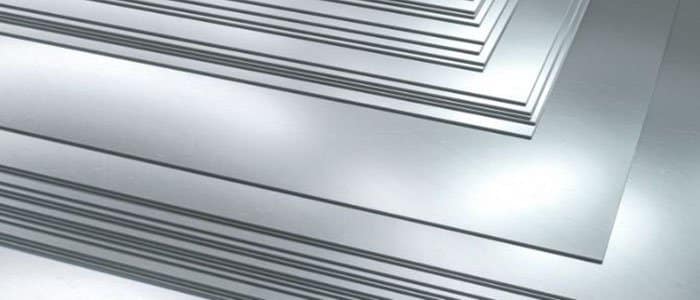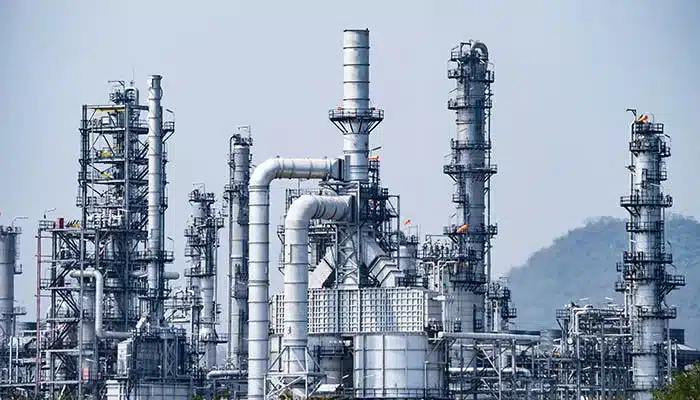In the industrial and construction fields, choosing the right stainless steel material is crucial. 2205 Stainless Steel and 2507 Stainless Steel, as two common duplex stainless steels, are widely used in industries such as chemical, offshore engineering, and oil and gas due to their excellent corrosion resistance, high strength, and good welding performance. Although they are both duplex stainless steels, there are significant differences in composition, performance, and applicable scenarios. This article will compare the characteristics of 2205 stainless steel and 2507 stainless steel in depth to help you make a more informed choice in practical applications.
What is duplex stainless steel?
2205 stainless steel and 2507 stainless steel are the two most commonly used grades of duplex stainless steel, a type of stainless steel material composed of two phases, austenite and ferrite. Compared with traditional austenitic or ferritic stainless steels, duplex stainless steels have higher strength and better resistance to stress corrosion cracking while maintaining good corrosion resistance. This makes duplex stainless steel perform well in harsh environments, especially for high chloride, high pressure, and high temperature applications.
Chemical composition comparison
There are obvious differences in chemical composition between 2205 stainless steel and 2507 stainless steel, which directly affect their performance and application range.
2205 stainless steel
The typical chemical composition of 2205 stainless steel includes:
Chromium (Cr): about 22%
Nickel (Ni): about 5.5%
Molybdenum (Mo): about 3%
Nitrogen (N): about 0.14%
2507 stainless steel
The chemical composition of 2507 stainless steel is richer:
Chromium (Cr): about 25%
Nickel (Ni): about 7%
Molybdenum (Mo): about 4%
Nitrogen (N): about 0.25%
In terms of composition, the content of chromium, nickel, molybdenum and nitrogen in 2507 stainless steel is higher than that of 2205 stainless steel, which makes 2507 stainless steel better in corrosion resistance, pitting corrosion resistance and crevice corrosion resistance. In addition, the increase of nitrogen also further improves the strength and fatigue resistance of 2507 stainless steel.
Comparison of Mechanical Properties
2205 stainless steel
The mechanical properties of 2205 stainless steel include:
Tensile strength: about 620 MPa
Yield strength: about 450 MPa
Elongation: about 25%
2205 stainless steel has good strength and toughness, suitable for applications with medium strength and corrosion resistance requirements.
2507 stainless steel
The mechanical properties of 2507 stainless steel are even better:
Tensile strength: about 750 MPa
Yield strength: about 550 MPa
Elongation: about 20%
The strength of 2507 stainless steel is significantly higher than that of 2205 stainless steel, especially under high temperature and high pressure environments, its performance advantages are more prominent. This makes 2507 stainless steel more suitable for structural materials under extreme working conditions.
Application scenario comparison
Application of 2205 stainless steel
Due to its good comprehensive performance, 2205 stainless steel is widely used in the following fields:
Chemical equipment (such as reactors, storage tanks)
Marine engineering (such as desalination equipment, marine components)
Oil and gas industry (such as pipelines, valves)
Building structures (such as bridges, curtain walls)
Application of 2507 stainless steel
2507 stainless steel is suitable for more demanding environments due to its excellent corrosion resistance and high strength:
Chemical equipment with high pressure and high temperature
Deep-sea equipment in marine engineering
Wellhead equipment and piping systems in oil and gas fields
Cooling systems and heat exchangers in the power industry
2507 stainless steel is particularly suitable for environments with high chloride content, such as seawater, chloride solutions, etc. Its resistance to pitting and crevice corrosion far exceeds that of 2205 stainless steel.
How to choose 2205 stainless steel or 2507 stainless steel?
The choice of 2205 stainless steel or 2507 stainless steel mainly depends on the following factors:
Corrosive environment: If the chloride content in the working environment is high, or there is a risk of pitting and crevice corrosion, 2507 stainless steel is a better choice.
Strength requirements: For applications that need to withstand high pressure or high temperature, 2507 stainless steel has higher strength and is more suitable for use.
Cost considerations: If the budget is limited and the corrosive environment is relatively mild, 2205 stainless steel is a more cost-effective choice.
Processing performance: 2205 stainless steel has good processing performance and is suitable for conventional welding and forming operations, while 2507 stainless steel has better performance but has higher requirements for processing technology.
In summary, 2205 stainless steel and 2507 stainless steel each have their own advantages and disadvantages, and the choice should be weighed according to the specific application scenario and performance requirements.
Conclusion
As two important duplex stainless steels, 2205 stainless steel and 2507 stainless steel are widely used in industry and construction. With its good comprehensive performance and low cost, 2205 stainless steel is suitable for most applications with medium strength and corrosion resistance requirements. 2507 stainless steel is suitable for more demanding environments due to its higher strength and better corrosion resistance. When choosing, you should decide which material to use based on specific project requirements, environmental conditions and budget.




